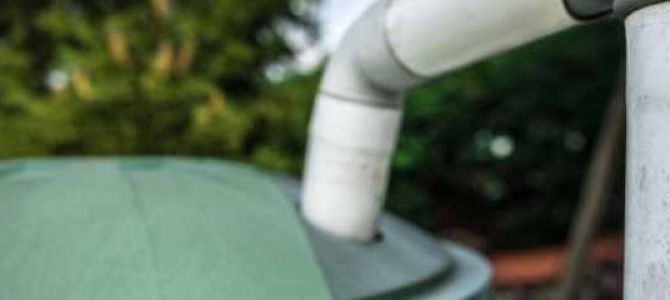 Shopping Cart
Shopping Cart
09 August 2024
Collecting and using rainwater – a beginner’s guide

Water is something we all need in our lives. A study of water use in Auckland found that, on average, people typically use between 140 and 170 litres of water a day. Whether it’s for drinking, cooking, washing, flushing the toilet, watering the garden, or doing the dishes – water is a resource we all rely on every single day.
In recent years, there has been increased pressure on water resources in New Zealand and especially in Auckland, where summer drought conditions and lower-than-average rainfall has led to strict water restrictions in the city.
Whilst water levels have been restored following a wet winter in 2022, we can expect further pressure on water resources in future years due to population growth in New Zealand and fluctuating weather patterns that will likely lead to hot, dry summers across the country.
To combat the growing pressure on the mains water supply, local councils are starting to turn to water tanks and rain harvesting as a way of reducing the demand for mains water.
Rainwater is a free and perpetually renewing resource and there is a strong belief that we are not doing as much as we could here in New Zealand to maximise the collecting of rainwater and put that water to good use in homes and businesses.
In a recent post, we looked at whether New Zealand should be more proactive in collecting rainwater. In that post, we reported on an article published in Stuff that asked 66 of the nation’s 67 territorial authorities (excluding the Chatham Islands) about their policies on the collection of rainwater.
The results of the study found that very few local councils are doing enough to promote the collecting and use of rainwater around New Zealand and that we could be doing a lot more.
In Gore, for example, all new residential buildings are required to install a rainwater tank with a minimum capacity of 3,000 litres. With all the new builds going on around New Zealand, and in particular, in Auckland, imagine the impact of every new build collecting rainwater in a 3,000-litre tank every year.
The truth is, we could all be doing more to collect and utilise rainwater around our homes. Installing a rainwater tank is relatively simple and inexpensive and the benefits are ongoing.
The rainwater you collect not only reduces the pressure on the mains water supply, but it also helps to reduce your own water costs and over time, a rainwater tank will pay for itself in the money you save on your water bills each month.
Who should install a rainwater tank?
Traditionally, rainwater tanks have been installed in houses where mains water supply was not available. Whilst there are still many properties throughout New Zealand that face that issue, we are seeing more and more properties that are connected to the mains water installing rainwater tanks as a way of becoming more sustainable and self-sufficient.
The water restrictions that were placed on Auckland properties for a period of 18 months reminded people that becoming self-sufficient by collecting your own water supply is a great way of being able to carry on with activities such as watering the garden or washing the car, even when water restrictions are in place.
As the climate changes and water shortages are likely to become more frequent here in New Zealand, it makes sense that more and more New Zealanders should consider installing a water tank to become more self-sufficient and less reliant on the mains water supply.
How do you collect and use rainwater?
One of the biggest factors driving the increase in the number of water tanks installed in properties throughout the country is the innovation in the design of water tanks today.
Historically, water tanks have been large, round containers that could look unsightly on a property, especially when they are installed above ground. Today, however, water tank manufacturers are finding innovative ways to make installing water tanks around the home more practical and aesthetically pleasing.
Slimline water tanks can be installed against the side of houses or fence lines, blending in more naturally.
When it comes to collecting rainwater, the process is fairly simple. Rainwater is collected from your roof and filtered into your tank until it is required.
Depending on how you plan to use the water will dictate the size of the tank you need. If you only plan to use the water collected from your roof for watering the garden, a simple 200-litre rain barrel may be sufficient to meet your needs depending on the size of your garden.
If you plan to use the water you collect to water a large garden, wash the car, and carry out other outdoor activities, you may wish to install a larger tank.
For those looking to use the water for internal uses – flushing the toilet and washing clothes, for example, a rainwater tank can be used to supplement your existing mains water supply.
Finally, if you are going to rely on a water tank for all water needs, including drinking, cooking, and bathing, you will need to work out the amount of water you both use and can collect from your roof to calculate the size of tank you need.
Our recent post What size water tank do I need? provides some good guidance to help you to calculate the size of tank you might need at your property.
Legal Requirements
Depending on how you plan to use the water collected in your tank will dictate the legal requirements for installation.
Some councils throughout New Zealand will only allow you to use rainwater for potable purposes (e.g., drinking, cooking, bathing etc.) if it has been treated.
If you plan to install a tank for outdoor use only, there are typically no legal requirements, but it is always best to check with your local council before you start.
If you are planning to connect your rainwater tank system to the plumbing in the house that also has mains supply, you will need building consent. You are also required by law to ensure that the mains water is isolated from the rainwater system to ensure there is no backflow from your system into the mains supply. You will need a professional plumber to install a backflow prevention device.
Choosing the right size of tank
The right size of water tank will be dictated by how you plan to use the water you collect from your roof.
If rainwater is going to be your only source of water, you will need at least a 30,000-litre tank and even then, in times where rainfall is lower than average, you may still need to top up your tank depending on the number of people in your property and your average water consumption.
We have covered this topic off in depth in our recent post so make sure you check out our post - What size water tank do I need?
Maintaining your water tank
Once you have taken the plunge and installed a water tank, you need to ensure you carry out regular maintenance to ensure the overall quality of the water is suitable for purpose.
If you are installing a water tank for potable purposes, then this becomes even more crucial. If you do not set up your water tank correctly, there is a risk that the collected water could contain:
· Leaves, soil, and other debris
· Bird, possum, and other animal droppings
· Heavy metals such as lead from your roof or roof paint
· Ash and chemical residues from local spraying or vehicle emissions
Preventing contamination
One of the best ways to maintain the quality of the water in your tank is to prevent contamination from the outset. If you are simply using the water to water the garden or clean the car, there are some basic things you can do to prevent contamination including:
· Use a screen over the tank’s inlet pipe to keep out insects, birds, and animals.
· Install gutter screens to prevent debris from entering the gutter but don’t stop water flow. These screens should be cleaned on a regular basis.
· Ensure the tank is tightly covered.
· Use a ‘first flush diverter’ – a simple device that fits onto your downpipe or tank inlet and prevents the initial flow of contaminant-laden water from the roof entering the tank when it rains.
Treating and purifying water for drinking
If you are planning on using the rainwater you collect for drinking, cooking, and bathing, you will need to treat and purify that water on top of the measures listed above. There are a few options available when it comes to purifying water and these will all add costs to your installation and include:
· Adding chlorine
· Use a very fine inline filter or purifier
· Boil the water for one minute
· Ultraviolet light treatment
Maintenance
Regular maintenance of your water tank, no matter what you use the water for, is essential if you want to extend the life of your tank and stay healthy. There are some tasks that should be carried out monthly, quarterly, and annually to maintain your tank and these include:
Monthly
· Check the roof and gutters for debris
· Keep the roof clear of overhanging vegetation to reduce the debris on the roof and gutters
· Keep the roof clean, especially from bird droppings
Quarterly
· Check and maintain screens and filters
· Wash out the first flush diverter
· Check the condition of the tank’s pipes, fittings and structural supports and inspect the tank for cracks or leaks
Annually
· Desludge your tank – if there is one, use the sediment removal tap at the bottom of your tank
Summary
Water tanks are becoming a popular option for houses throughout New Zealand and hopefully, this guide gives you an idea about the things you need to consider before installing a tank and how to maintain a tank once you have installed one.
If you already have a tank installed or you are thinking of installing a tank, a great addition is a water level meter that will enable you to see how much water is in your tank at any time. These are particularly useful for large tanks that are used as the main source of water for a property, however, they can be installed on a wide range of water tanks.
At Smart Water, we have engineered the most advanced tank level indicator available that now offers full cloud connectivity.
Easy to install yourself, your Smart Water tank indicator provides you with all the information you need from our app or from one of our LCD displays. Find out how much water you consume on average from your tank, accurate pressure data and estimates on when your tank will run out of water based on current usage.
Find out more about our range of products or check out our FAQs for more information.
Frequently Asked Questions
Can rainwater harvesting systems be retrofitted into existing homes?
Yes. Most rainwater harvesting systems can be added to existing homes with minor modifications. Slimline tanks and modular systems are especially popular for urban properties with limited space. Professional installers can assess your roof and plumbing to recommend the best setup.
How much rain do I need for a tank to be useful?
Even moderate rainfall can make a rainwater tank worthwhile. For example, 1mm of rain on 100m² of roof can yield 100 litres of water. With New Zealand’s variable climate, most households can still harvest thousands of litres annually, even in drier regions.
What happens to overflow water when the tank is full?
Most rainwater tanks are equipped with an overflow outlet that safely diverts excess water to a soak pit, stormwater drain, or secondary tank. This ensures your property doesn’t flood and helps manage runoff sustainably.
